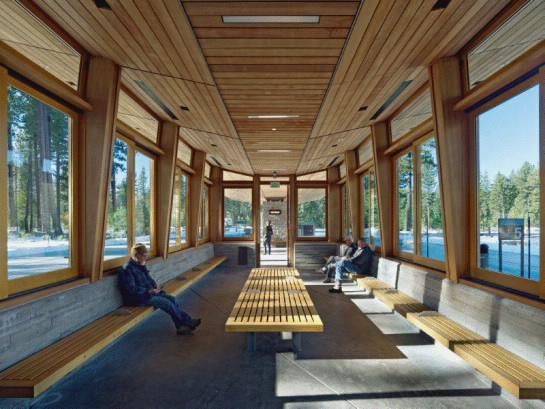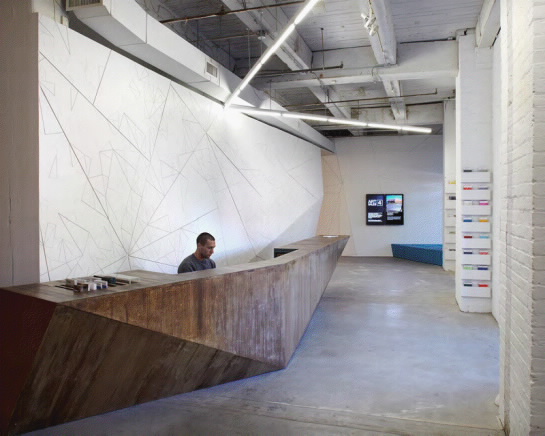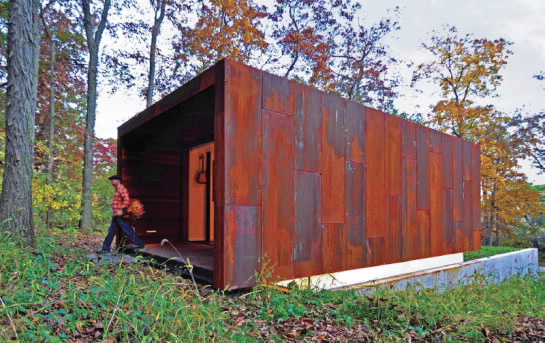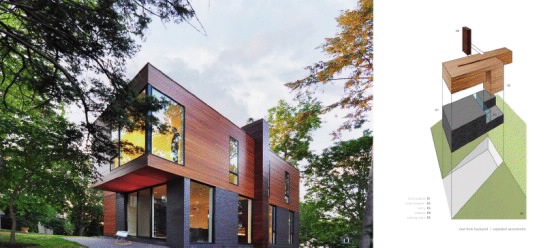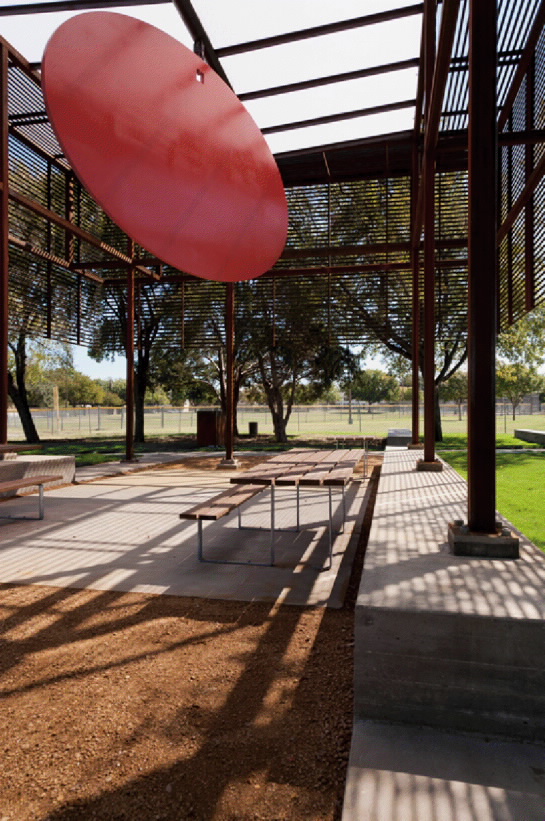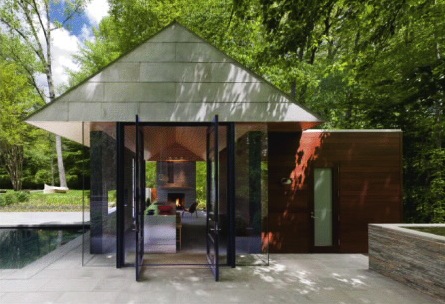Washington, D.C. – April 10, 2013 – The American Institute of Architects (AIA) has selected the ten recipients of the 2013 Small Project Awards. The AIA Small Project Awards Program, now in its tenth year, was established to recognize small-project practitioners for the high quality of their work and to promote excellence in small-project design. This award program emphasizes the excellence of small-project design and strives to raise public awareness of the value and design excellence that architects bring to projects, no matter the limits of size and scope.
The jury for the Small Project Awards includes: Leonard Kady, AIA, (jury chair) Leonard Kady Architecture + Design; Julie Beckman, KBAS; Christopher Herr, AIA, Studio H:T; Laura Kraft, AIA, Laura Kraft Architect; and Rob Yagid, Fine Homebuilding Magazine.
Award recipients are categorized into four groups:
Category 1: A small project construction, object, work of environmental art or architectural design element up to $150,000.
Category 2: A small project construction, up to $1,500,000.
Category 3: A small project construction, object, work of environmental art, or architectural design less than 5,000-square-foot constructed by the architect. The architect must have had a significant role in the construction, fabrication and/or installation of the work, in addition to being the designer.
Category 4: Unbuilt architectural designs less than 5,000-square-foot for which there is no current intent to build, of all project types including purely theoretical, visionary projects, with or without a client.
You can get more information and see additional images of the projects by following the links below.
Category 1: Project up to $150,000
Bemis Info Shop; Omaha
Min | Day
More than a new entry and reception area for a contemporary art center, the InfoShop is a social condenser and transition space between the city and the galleries. It is an open social space for spontaneous meetings, dialog and debate. A 24’-long reception desk can be transformed into a full bar with a plug that fills the work area. Opposite are banks of simple boxes for publications and leaflets that extend the modules of the existing brick wall. The paneled the wall with custom, CNC-milled panels derived from a pinwheel aperiodic tiling pattern. The pattern is composed of right triangles with infinite variation in scale and orientation but no periodicity.
Cemetery Marker; South Canaan, PA
Kariouk Associates
Before dying, a woman left a note for her children to be read after her death and her sole request was that her gravesite becomes a garden. The tops of her marker are inscribed with a stanza from Audre Lorde’s poem “Prologue”, reading“…The children remain like blades of grass over the earth and all the children are singing louder than mourning…And the grasses will still be singing.” The five cast bronze plates of this marker spread over the site at varied heights above the earth, spaced to permit the grass to grow between. As the plates age, they oxidize and blend into the landscape.
Studio for a Composer; Spring Prairie, WI
Johnsen Schmaling Architects
This intimate retreat serves as a studio for a Country Western musician to write his work and reconnect with nature. A concrete plinth, carved into the sloped site, provides storage space and supports a linear studio volume whose long sides are covered with a weathering steel shroud. Glazed openings at each end of the studio frame views into the landscape, providing access into the space and onto the green roof of the concrete plinth. The clerestory provides natural light for the storage space below; at night, it emits its soft glow into the dark countryside. The carefully detailed steel envelope turns the building skin into an ever-changing canvas.
Category 2: Project up to $1.5 million
Nexus House; Madison, WI
Johnsen Schmaling Architects
The house is composed of two principal building blocks: a two-story brick podium partially embedded in the sloping site; and a linear cedar-clad meander that wraps up and over the podium before transforming into a cantilever, its overhang providing shade for the patio below. Steps lead up the slope to the front door, a glazed recess with a delicate steel canopy marking the vertical joint between the two building blocks. The door opens into a vestibule that leads into the main living hall, an open space whose neutral material palette is complemented by a troika of dark-stained wood objects spatially anchoring the open space: an entertainment center; a fireplace and chimney; and a wood canopy cradling an intimate side lounge, which can be closed off to transform into a guest bedroom or quiet study.
Pavilion at Cotillion Park; Dallas
Mell Lawrence Architects
The composition of steel components abstracts and mimics the surrounding trees to produce similar dappled shade. The sun’s movement animates the structure, catching direct light, casting shadows and patterns, and creating dynamic figure-ground shapes against the sky. Long concrete benches not only define the outdoor room under the translucent roof, but stretch out beyond to extend the usable area into and under the surrounding shade trees. Over time the raw steel will oxidize and the fly-ash concrete will weather like natural stone. The solid polycarbonate roof blocks the rain and UV rays. Suspended at the center of the pavilion hangs a bright red/orange elliptical mobile/weathervane which gently rotates to acknowledge any changing wind direction.
Webb Chapel Park Pavilion; Mission, TX
Cooper Joseph Studio
The site plan creates a shaded area for both a playground, and a soccer field. All surfaces are highly durable, fireproof and maintenance free. The reduced palette of board-formed concrete and plaster allows for the most effective play of shade and shadow. There is an element of surprise with the bright yellow, pyramidal shapes inside the rectangular concrete shell. The ceiling’s primary purpose is to act as a natural ventilation system, just as a traditional “palapa”, allowing hot air to rise. Convection breezes are increased as seating is embedded in the earth, keeping the concrete cooled.
Category 3: Project constructed by the architect, less than 5,000 sf

308 Mulberry; Lewes, DE
Robert M. Gurney, FAIA
The original structure was constructed in the early nineteenth-century in the heart of the historical district of Lewes. In the redesign, the exterior of the original structure is meticulously restored. While the exterior of the original house is restored with historically correct detailing, the four new pavilions are crisply detailed, without overhangs and trim. The additions are conceived as one-story pavilions organized around a new swimming pool and large Deodor Cedar tree, located at the rear of the property. Large expanses of glass set in black steel frames punctuate the cedar walls. Tall red brick chimneys and landscape walls add vertical and horizontal elements, completing the composition.
Nevis Pool and Garden Pavilion; Bethesda, MD
Robert M. Gurney, FAIA
The new pavilion, intended for year round use, provides a threshold between the structured landscape and adjacent woodland. A low-pitched, terne coated stainless steel roof floats above a dry-stacked slate wall and mahogany volume. The interior contains a stainless steel kitchen component along with a small living space, anchored by the fireplace. The bluestone flooring, stone and mahogany walls, and Douglas-fir ceiling create a warm, natural space. Five steel-framed glass doors along with frameless glass walls and mitered glass corners enclose the space, open the space much of the year while a large fireplace and heated floors provide a cozy counterpoint in winter months.
Tahoe City Transit Center; Tahoe City, CA
WRNS Studio
The Tahoe City Transit Center (TCTC) represents a vital step toward achieving a more sustainable transportation network within the region. The structure’s long and low roof hovers above the land, and is carefully situated among existing trees and other dramatic features of the site. In a simple, elemental gesture, the building brings together two of the area’s predominant materials, Sierra granite and western red cedar. With its broad eaves, narrow floor plate, thermally massive walls, and high performance glazing, the building adapts to the seasons and integrates sustainability wherever possible.
Category 4: Unbuilt design less than 5,000 sf
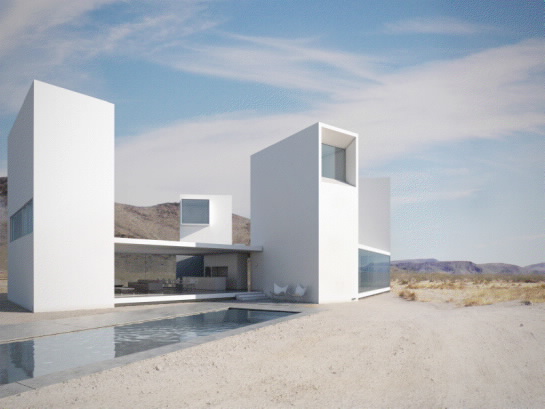
Four Eyes House; Coachella Valley, CA
Edward Ogosta Architecture
Four "sleeping towers" orchestrate four spatiotemporal viewing experiences: morning sunrise (east), mountain range (south), evening city lights (west), and nighttime stars (zenith). Each tower contains a compact top-floor bedroom, sized only for the bed, and each with a unique viewing-aperture. Ground-floor common spaces form a loose connective field between the discrete tower volumes, and offer a more permeable relationship to the landscape. The sensations of sleeping and waking are thus inflected by the building's foregrounding of intensified onsite experiential events.
About The American Institute of Architects
Founded in 1857, members of the American Institute of Architects consistently work to create more valuable, healthy, secure, and sustainable buildings, neighborhoods, and communities. Through nearly 300 state and local chapters, the AIA advocates for public policies that promote economic vitality and public well being. Members adhere to a code of ethics and conduct to ensure the highest professional standards. The AIA provides members with tools and resources to assist them in their careers and business as well as engaging civic and government leaders, and the public to find solutions to pressing issues facing our communities, institutions, nation and world. Visit www.aia.org.
Related Stories
| Aug 11, 2010
PCA partners with MIT on concrete research center
MIT today announced the creation of the Concrete Sustainability Hub, a research center established at MIT in collaboration with the Portland Cement Association (PCA) and Ready Mixed Concrete (RMC) Research & Education Foundation.
| Aug 11, 2010
Study explains the financial value of green commercial buildings
Green building may be booming, especially in the Northwest, but the claims made for high-performance buildings have been slow to gain traction in the financial community. Appraisers, lenders, investors and brokers have found it difficult to confirm the value of high-performance green features and related savings. A new study of office buildings identifies how high-performance green features and systems can increase the value of commercial buildings.
| Aug 11, 2010
Architecture Billings Index flat in May, according to AIA
After a slight decline in April, the Architecture Billings Index was up a tenth of a point to 42.9 in May. As a leading economic indicator of construction activity, the ABI reflects the approximate nine to twelve month lag time between architecture billings and construction spending. Any score above 50 indicates an increase in billings.
| Aug 11, 2010
Architecture Billings Index drops to lowest level since June
Another stall in the recovery for the construction industry as the Architecture Billings Index (ABI) dropped to its lowest level since June. The American Institute of Architects (AIA) reported the August ABI rating was 41.7, down slightly from 43.1 in July. This score indicates a decline in demand for design services (any score above 50 indicates an increase in billings).
| Aug 11, 2010
RTKL names Lance Josal president and CEO
Lance K. Josal FAIA has been named President and CEO of RTKL Associates Inc., the international planning, design and engineering firm. Josal succeeds RTKL’s current President and CEO, David C. Hudson AIA, who is retiring from the firm. The changes will take effect on 1 September 2009.
| Aug 11, 2010
Balfour Beatty agrees to acquire Parsons Brinckerhoff for $626 million
Balfour Beatty, the international engineering, construction, investment and services group, has agreed to acquire Parsons Brinckerhoff for $626 million. Balfour Beatty executives believe the merger will be a major step forward in accomplishing a number of Balfour Beatty’s objectives, including establishing a global professional services business of scale, creating a leading position in U.S. civil infrastructure, particularly in the transportation sector, and enhancing its global reach.
| Aug 11, 2010
Construction unemployment rises to 17.1% as another 64,000 construction workers are laid off in September
The national unemployment rate for the construction industry rose to 17.1 percent as another 64,000 construction workers lost their jobs in September, according to an analysis of new employment data released today. With 80 percent of layoffs occurring in nonresidential construction, Ken Simonson, chief economist for the Associated General Contractors of America, said the decline in nonresidential construction has eclipsed housing’s problems.
| Aug 11, 2010
Billings at U.S. architecture firms exceeds $40 billion annually
In the three-year period leading up to the current recession, gross billings at U.S. architecture firms increased nearly $16 billion from 2005 and totaled $44.3 billion in 2008. This equates to 54 percent growth over the three-year period with annual growth of about 16 percent. These findings are from the American Institute of Architects (AIA) Business of Architecture: AIA Survey Report on Firm Characteristics.


